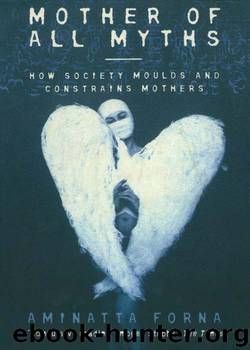Mother of All Myths by Aminatta Forna

Author:Aminatta Forna [Forna, Aminatta]
Language: eng
Format: epub
ISBN: 978-0-007-44772-5
Publisher: HarperCollins Publishers
Published: 1998-03-14T16:00:00+00:00
Do we have a ‘right’ to children?
The notion of rights is central to the debate over access to reproductive technology and all that it entails now and in the future. In the 1990s the increasingly influential infertility lobby has co-opted the language of feminist campaigns for women’s reproductive rights to use for its own ends. Campaigns for reproductive choice such as the right to have a termination have traditionally asserted that every woman has a legal right to choose whether or not to become a mother. If that is so, shouldn’t that right be extended to people who are infertile? Shouldn’t they also be given the right to control their own fertility by having a baby employing any and every possible means to do so?
In law, there is some evidence to say yes, it is a universal right. Article 12 of the European Convention on Human Rights states: ‘Men and women of marriageable age have the right to marry and found a family.’ The 1974 World Population Plan of Action has no particular legal status but nevertheless affirms: ‘all couples and individuals have the basic right to decide freely and responsibly the number and spacing of their children and to have the information and education to do so.’ So there is some evidence to say that we recognize the existence of a human right not just for couples, but also for individuals, to become parents.
In the United States, there is evidence of legal precedents dating back to 1942.27 Several other and more recent cases have established the right to choice and privacy from intrusion in matters of family and child, specifically Carey v. Population Services International 1977, which cited the Fourteenth Amendment on ‘liberty’ as extending to ‘freedom of choice in certain matters of marriage and family life’.28 That finding was reaffirmed by the Supreme Court in 1992 in Casey v. Planned Parenthood.29
However, legislators could not foresee the situations to which those ‘rights’ might be applied. If we say a woman has a right to become a mother, are we also saying that every man has a right to become a father, whether or not he has a partner to bear a child? Strictly speaking that is exactly where the argument leads us, as the case of William Austin illustrated in the most graphic way possible.
William Austin, a twenty-six-year-old single man from Pennsylvania, decided he wanted a child and hired a surrogate through the surrogacy centre run by Noel Keane. The establishment regularly provides surrogates for many single people including, in the past, about eight single men. Austin was not offered, neither did he receive, any counselling. By law in those American states which allow surrogacy, only the surrogates, not those who use their services, must be psychologically assessed. A woman was inseminated with Austin’s sperm and the child was born in the winter of 1994. Five weeks later Austin battered and shook the child to death. Austin was jailed. Later, in a legal hearing, the agency was absolved from
Download
This site does not store any files on its server. We only index and link to content provided by other sites. Please contact the content providers to delete copyright contents if any and email us, we'll remove relevant links or contents immediately.
The Incest Diary by Anonymous(7426)
The Lost Art of Listening by Michael P. Nichols(7170)
The Rosie Project by Graeme Simsion(5852)
We Need to Talk by Celeste Headlee(5421)
Beartown by Fredrik Backman(5369)
Ego Is the Enemy by Ryan Holiday(4964)
Hunger by Roxane Gay(4681)
Suicide Notes by Michael Thomas Ford(4658)
I Love You But I Don't Trust You by Mira Kirshenbaum(3710)
Mummy Knew by Lisa James(3523)
Crazy Is My Superpower by A.J. Mendez Brooks(3208)
Not a Diet Book by James Smith(3156)
Girl, Wash Your Face by Rachel Hollis(3128)
Toxic Parents by Susan Forward(3127)
The Complete Idiot's Guide to Coping With Difficult People by Arlene Uhl(3067)
Name Book, The: Over 10,000 Names--Their Meanings, Origins, and Spiritual Significance by Astoria Dorothy(2846)
The Hard Questions by Susan Piver(2824)
The Social Psychology of Inequality by Unknown(2771)
The Gaslight Effect by Dr. Robin Stern(2672)
